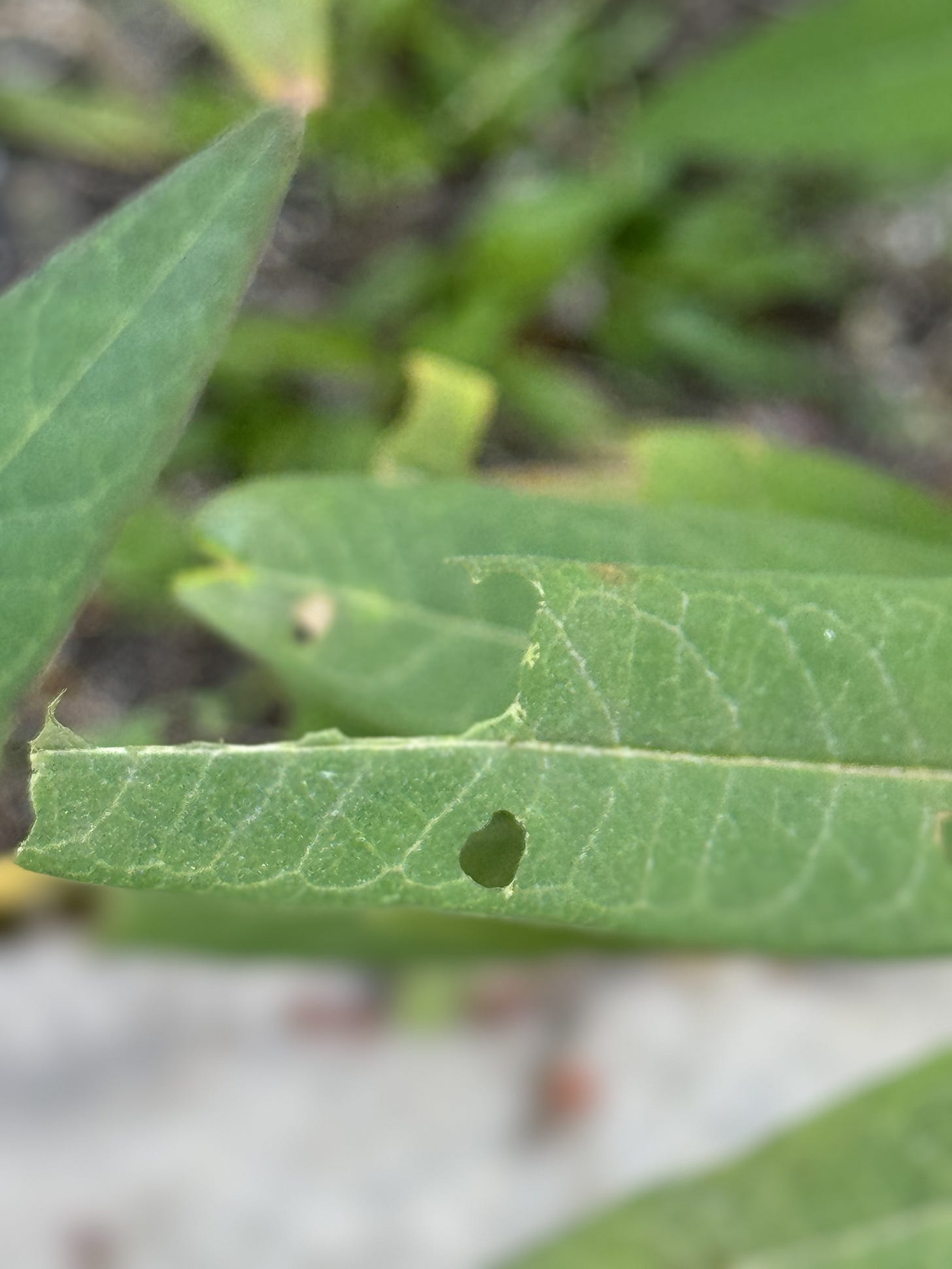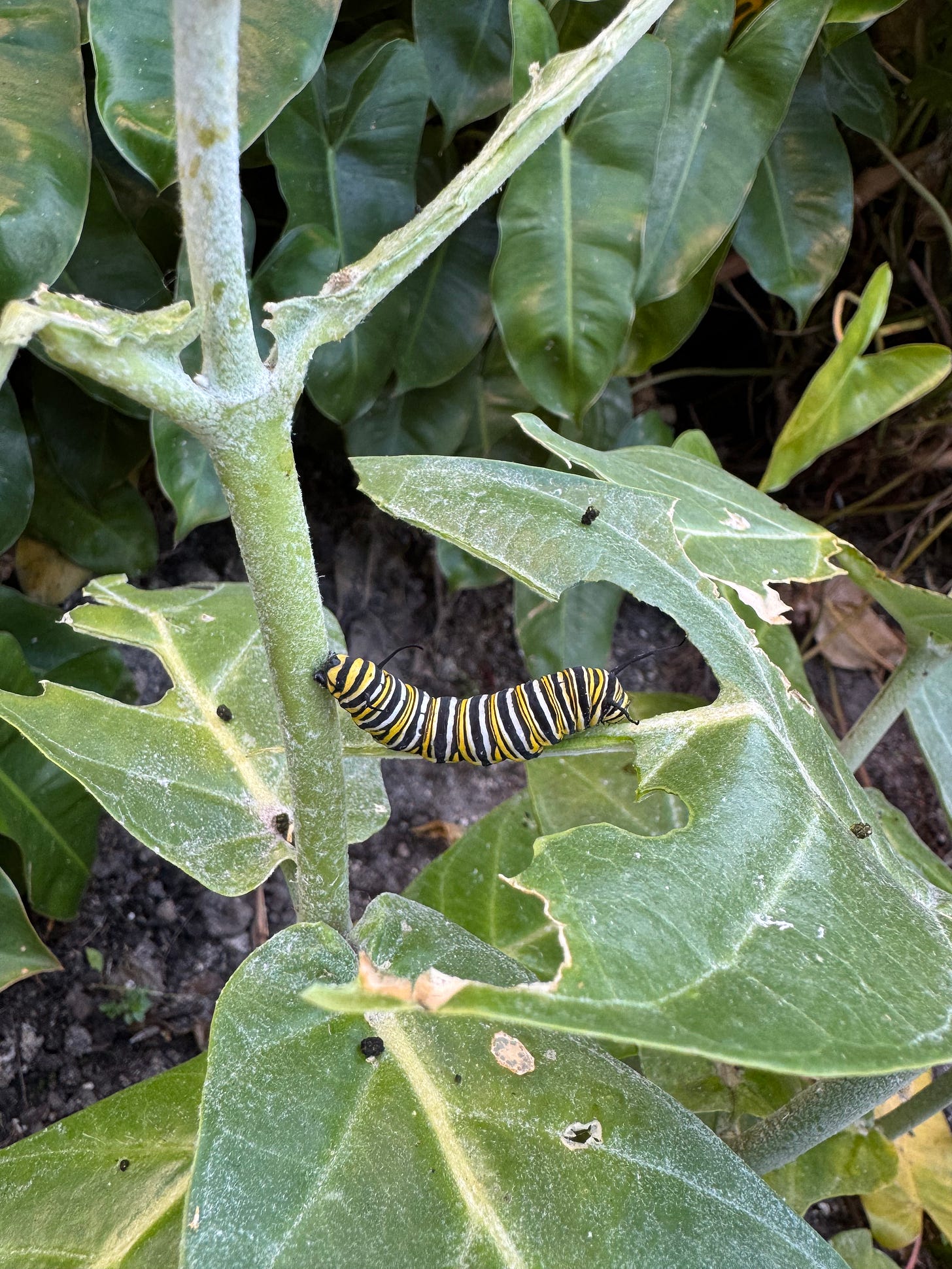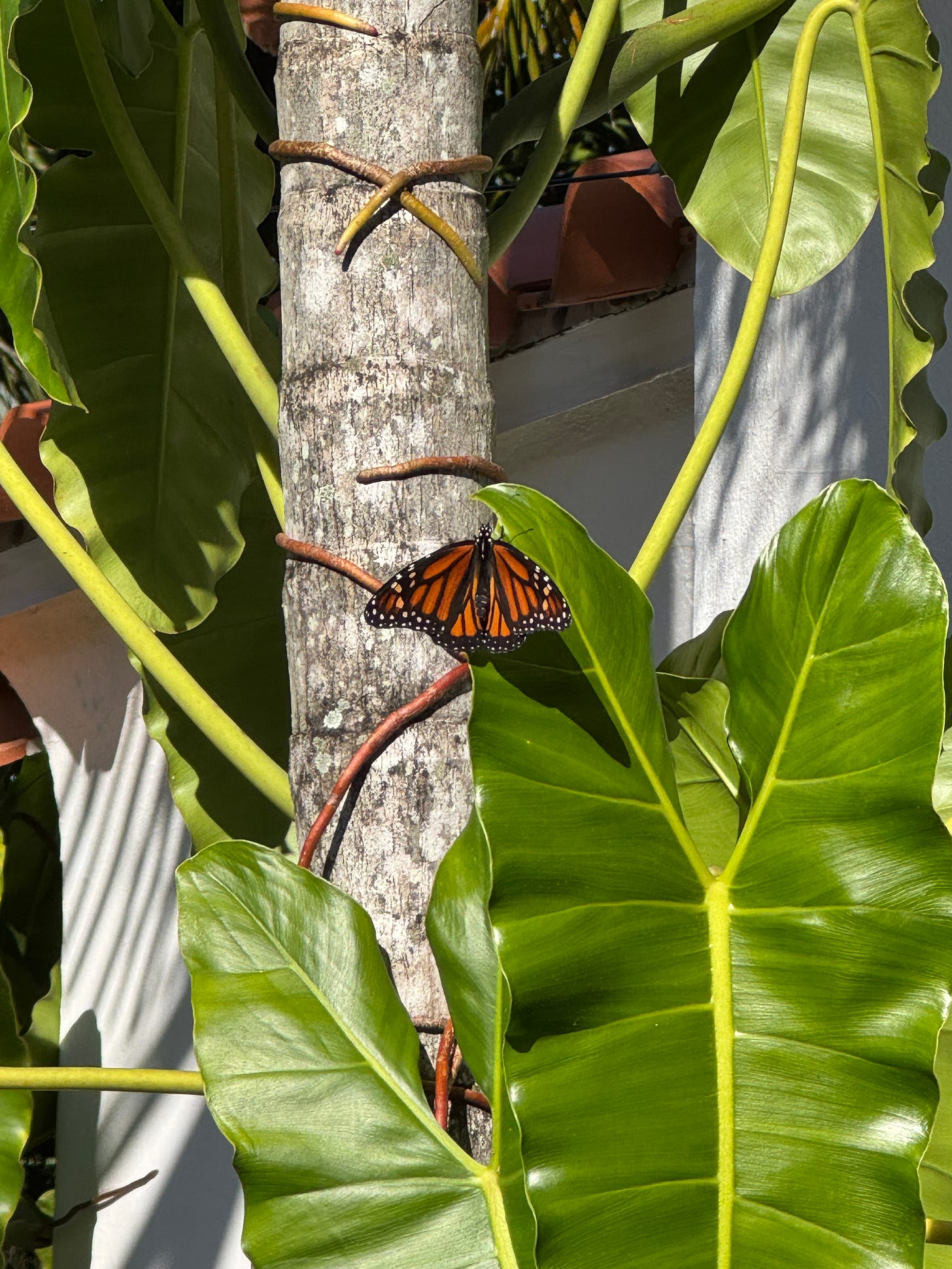Dear friends,
We’re so excited to bring you our first-ever family video production, embedded above and also viewable on our brand new Earth Parade YouTube channel! Please consider subscribing to that channel as well, which makes sense if you are already watching YouTube and/or you prefer to watch videos on larger screens.
The video, starring all the kids, was narrated and presented by our 7-year-old Ori. Dana did some filming and creative direction, and Jaron did the editing. It was a true team effort. We’re proud of our little family, and we hope you enjoy it!
It’s rare that a simple, fun, and educational action that just about anyone can do in their own homes or community garden can also help the survival of a species. This is one of those activities. The best part is that it’s the gift that keeps on giving. Your kids (and you!) will get to watch the stages of a monarch caterpillar's life unfold in real-time, and then you get the incredible reward of monarch butterflies flying around and enchanting your garden for years to come.
We've added a little more context below for those who want to learn more about milkweed varieties, understand what to do if they live in a colder climate, or prefer to read rather than watch. Here are the more detailed steps to turning your backyard, garden, or balcony into a monarch butterfly oasis for less than the cost of a month's Netflix subscription!
Step 1:
Find a little patch of soil that gets some sunlight.
Step 2:
Go to a garden center or plant store that sells milkweed plants and buy a plant. Very important: When you buy a milkweed plant, it often will have microscopic caterpillar eggs or tiny caterpillars already living on it and munching the leaves. Buy the plant that looks like it came out of the classic children’s book “The Very Hungry Caterpillar” with little irregular holes in some leaves. You want that one because it means you’re getting the 2-for-1 special. You’re buying a plant, getting at least one caterpillar, and hopefully many more.
Step 3: Grab your kids and a shovel and plant your new larval host plant in a sunny spot. The plant needs sunlight, and butterflies seem to enjoy it, too. Aerate the soil a bit, and then water it.
Step 4: Watch the plant get consumed by caterpillars, who will grow and grow before your eyes. Our kids run to the caterpillars and check their progress every day. It's so fun to see them grow.
Important: If you’re not getting a lot of rain, keep watering the plant, but not with a high-pressure hose, as you don't want to knock the caterpillars off. Use a watering can on this one.
Step 5: Enjoy watching the metamorphosis happen! You will see a lot of caterpillar eating and pooping (they look like tiny green pellets). It's very hard to find the chrysalis (pupa) as this sometimes happens in other places, such as windowsills or other plants. Also, most caterpillars don't survive as they are preyed on by birds and rodents. However, there’s a good chance that one or two or more monarch butterflies will fly around in your garden, eating and pollinating and laying eggs on the same milkweed it was born on, starting the cycle over again.
Which milkweed variety should I get ?
Good question! Milkweed plants are super common all over North America. There are many varieties of milkweed, about 130, and they all support the monarch larval cycle. There is Common Milkweed (Asclepias syriaca), and in the northern parts of the USA, you will probably also find Butterflyweed (Asclepias tuberosa) or Swamp Milkweed (Asclepias incarnata). If you’re down south, you will probably find our favorite variety, which is Asclepias curassavica, commonly known as tropical milkweed, AKA bloodflower, redhead, or if you’re in Mexico or Central America, hierba de la cucaracha. The best thing about this one is that it is perennial, regenerates itself, and flowers many times over a year. Which means you can have caterpillars and butterflies year-round. That’s one of the plants in our video. The other one is Giant Milkweed, Calotropis gigantea, also known as Crown Flower, which comes from Asia and Africa but does well in places that don’t freeze.
There is some controversy around non-native plants, leading to this deadly protozoan parasite called Ophryocystis elektroscirrha (OE), which sounds about as terrible as it it. According to scientists, it's not the plant per se but rather the prolonged breeding that can foster higher than normal infection rates, which is why Florida-based, non-migratory butterflies (of course) have a higher likelihood of infection. So, if you notice that your butterflies are not healthy or have missing wings, you may want to prune back your plant to coincide with the normal butterfly breeding schedule
Another thing to look out for is that some commercially grown plants are treated with systemic pesticides during cultivation. These pesticides can make the plants toxic to monarch larvae. If possible, always try to get organic and native milkweed!
Finally, if you’re in a colder climate and going through winter right now, don’t fret. You can actually keep many of these milkweed varieties in a potted plant near a sunny window and grow them indoors until the spring. Then just move them outside.
A safety note about milkweed plants:
Milkweed plants do contain toxins and medicines. It’s essential to respect and not consume them unless you know what you’re doing. American Indians used the roots of this plant to treat respiratory illnesses and other ailments. When you break a leaf, you see this milk-like sap emerge. This is the reason milkweed is the only plant that monarchs pupate on. It is poisonous and foul to the taste, making predators less likely to target them. We do not recommend letting pets or kids eat the milkweed leaves. If there’s any risk of that happening, fence off the plant or just keep an eye on the little ones while observing the caterpillars.


















